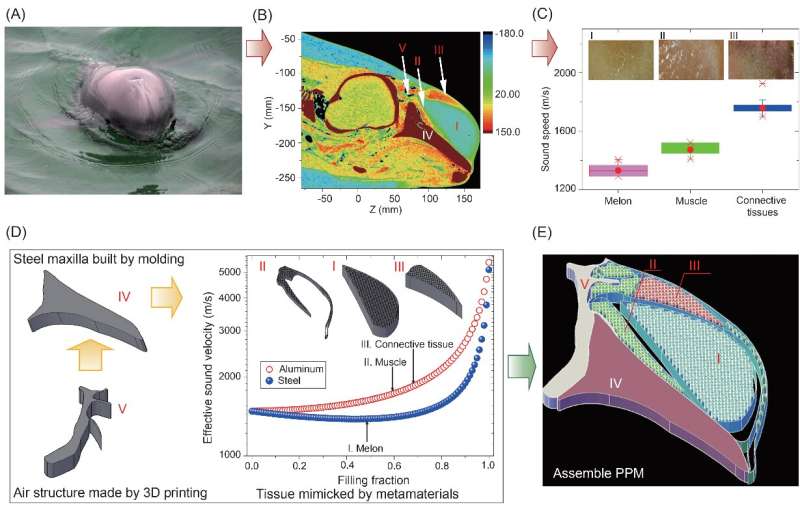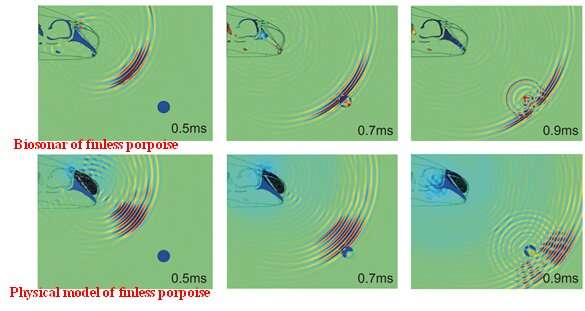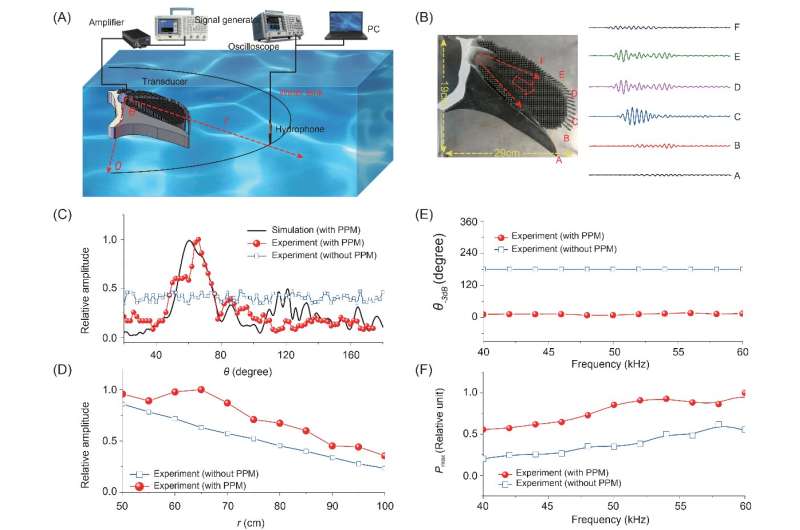The design of the physical-based physical model Credit: ©Science China Press
Over millions of years, porpoises have developed powerful biosonar with high accuracy and intelligence to detect and track prey in noisy underwater environments. The sound source in a porpoise is about one half of the wavelength of its emitted acoustic waves. According to textbook sonar theories, it is difficult to control the directional sound waves for target detection. Porpoises, with remarkable sonar detection capabilities, have been known as a natural legend of echolocation, but how to reconstruct their acoustic super-structures has been a huge challenge for artificial design.
In one research work published in the National Science Review (NSR), the research groups of Prof. Yu Zhang from Xiamen University and Prof. Nicholas Xuanlai Fang from Massachusetts Institute of Technology made exciting progress in this research area. They proposed to reconstruct the finless porpoises' physical model via hybrid metamaterials based on computer tomography imaging and gradient sound speed measurement (Fig. 1).
This physical-based porpoise model (PPM) can manipulate the directional sound beams through the multiphase artificial materials such as air sacs, solid structure, and gradient materials. The directional device can produce transient specular reflected and elastic waves by interacting with an underwater target, which is very similar to finless porpoise biosonar (Fig. 2). This advantage allows to significantly improve the detection accuracy and suppress the perturbations from environment noise and reverberation interferences such as sea interfaces and non-detected targets.
Acoustic field simulations and experimental measurements found that the PPM increased the main lobe energy in a wide range of frequencies. However, the finless porpoise usually uses narrow-band sonar, suggesting that this physical model further improves sonar performance. In addition, experimental measurements indicated that this device increased the signal-to-noise ratio for underwater target detection. Thus, PPM might show good performance in directionally detecting underwater targets and suppressing false target interferences.
Underwater target detections of finless porpoises' biosonar and its physical model. Credit: ©Science China Press
The physical-based porpoise model bridges the gap between biosonar and artificial systems by mimicking biological materials. The physical modeling study of porpoises not only helps us to explore the natural mystery of the porpoise's biosonar, but also to promote the development of bioinspired technology, so as to achieve the goal of "from nature but beyond nature." The principle of wave manipulation in complex multiphase media is universal, and bioinspired devices might be widely used in the fields of underwater acoustic sensing, nondestructive testing, and medical ultrasound, etc.
Acoustic directional beam experiments of the PPM device Credit: ©Science China Press
More information: Erqian Dong et al, Physical modeling and validation of porpoises' directional emission via hybrid metamaterials, National Science Review (2019). DOI: 10.1093/nsr/nwz085
Provided by Science China Press


























